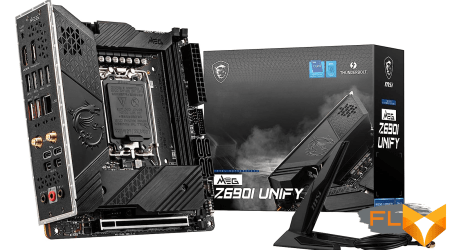In today’s fast-paced world, enjoying your favorite shows and films requires a touch of personalization that elevates the overall enjoyment. The convergence of audio and visual elements plays a crucial role in how we interact with on-screen content. By focusing on high-quality sound delivery, viewers can create an atmosphere that pulls them deeper into the narrative, making each moment resonate.
Numerous options are available to transform your auditory journey while watching television. Utilizing advanced technology allows you to experience dialogues, sound effects, and musical scores in ways that truly captivate the senses. The right audio setup can transport you to another realm, allowing you to escape into the story being told.
Many enthusiasts seek innovative solutions to tailor their viewing habits, whether it be through the comfort of their living room or the intimacy of a private space. There are various methods to enhance your auditory environment, providing flexibility and a unique touch to your daily routine. Embracing these techniques can lead to a richer engagement with the captivating worlds portrayed on screen.
Choosing the Right Headphones
Selecting the appropriate audio devices is crucial to enhancing your viewing sessions. The right pair can significantly alter the way you engage with your favorite shows and movies. You’ll want to consider various factors that contribute to comfort, sound quality, and suitability for different environments.
Sound quality is a primary consideration. Look for models that offer rich tones and clear dialogue to ensure that you don’t miss any important details. Various types exist, each providing unique audio characteristics. For example, over-ear styles may deliver a fuller sound stage, while in-ear options might offer a more portable solution without sacrificing clarity.
Comfort is equally important, especially during extended use. Choose options that fit snugly without causing discomfort. Padding around the ears and adjustable headbands can make a significant difference in how long you can enjoy your content without needing a break.
Active noise cancellation can enhance your environment by reducing background sounds, allowing you to focus solely on what’s happening on the screen. This feature is particularly useful in busy households or noisy settings where distractions are prevalent.
Lastly, consider the connectivity you prefer. Wireless designs provide convenience, eliminating the hassle of cords, while wired versions may offer better audio quality without potential latency issues. Think about your lifestyle and how you plan to use your devices; different situations may warrant different types of audio gear.
Understanding Audio Formats for TV
In today’s entertainment landscape, the clarity and depth of sound play a crucial role in how viewers engage with visual content. Different audio specifications can significantly influence the auditory experience, affecting everything from dialogue intelligibility to the richness of background music and sound effects. Recognizing these various formats allows consumers to optimize their setups and enhances overall enjoyment.
Television audio can be categorized into several formats, each delivering sound in unique ways. Formats such as stereo provide a basic two-channel experience, allowing somewhat limited directionality. In contrast, surround sound formats offer a more expansive audio environment, as they utilize multiple channels to create a three-dimensional sound stage that envelops the listener.
Advanced setups may leverage formats like Dolby Atmos, which introduces an additional layer of audio perception by incorporating overhead sound channels. This level of sophistication enables more realistic representations of audio sources in a three-dimensional space, elevating the experience to new heights, especially in action sequences or immersive documentaries.
Understanding the distinctions between these audio formats and how they interact with different devices is essential for maximizing the auditory pleasure derived from television programming. By choosing compatible equipment and settings, viewers can fully immerse themselves in the vibrant world of sound accompanying their favorite shows and movies.
Setting Up Your Home Theater
Creating a stunning entertainment space requires careful consideration of various elements to enhance your audiovisual experience. From equipment selection to optimal placement, every decision contributes to achieving a captivating atmosphere where you can fully enjoy your favorite films and shows.
Choosing the Right Components
Begin by selecting the essential components that will serve as the backbone of your setup. A high-quality television or projector is vital, as is an advanced sound system. Evaluate your space and decide whether you prefer a traditional speaker arrangement or a more compact setup that utilizes soundbars or integrated systems. Remember that compatibility among devices can greatly influence the overall performance and functionality of your theater.
Positioning and Calibration
Once you have your components, focus on strategic placement. Position the screen or projector at eye level, ensuring that viewers can enjoy a clear and unobstructed view. Arrange speakers around the seating area to create a balanced audio environment. Calibrating the audio and video settings is equally important, as it allows you to fine-tune the output for ideal performance. Take the time to test and adjust these settings to suit your preferences and room acoustics.
Wireless vs. Wired Headphones: Pros and Cons
When choosing audio equipment, two primary types often come to mind, each offering distinct advantages and drawbacks. Understanding these differences can help individuals make informed choices tailored to their specific desires and circumstances.
Wireless options provide exceptional convenience, allowing users to move freely without the hassle of tangled cords. This can be especially beneficial during activities like exercising or moving around the home. Additionally, modern advancements in technology have improved battery life and sound quality, making wireless devices a popular choice for many.
On the other hand, wired devices are celebrated for their reliability and superior audio fidelity. With no need for batteries, users can enjoy uninterrupted sound without worrying about charging. Furthermore, a wired connection typically delivers clearer sound, making it a favored option for audiophiles and those seeking an unaltered listening environment.
Ultimately, the decision between these two formats hinges on personal preferences and usage scenarios. Whether one prioritizes mobility and convenience or values consistent quality and reliability can significantly influence which type will best suit their needs.
Enhancing Sound with External Devices
The auditory dimension of your viewing sessions can be significantly elevated through various additional equipment. By integrating external components, one can achieve a richer, more vibrant audio palette that enhances overall enjoyment.
Utilizing soundbars is an excellent method to amplify the quality of audio. These sleek devices not only save space but also deliver superior sound compared to standard television speakers. With the right model, you can experience deep bass and crystal-clear dialogue, making every scene more captivating.
Wireless speakers offer flexibility and ease of setup, allowing placement throughout the room for a surround-sound effect. This arrangement can lead to a more engaging atmosphere, making you feel as if you are part of the action rather than just an observer.
For a personalized touch, consider digital-to-analog converters (DACs). These devices enhance audio fidelity by providing a higher quality sound signal. When combined with high-performance speakers or high-end audio systems, they can transform your ordinary sessions into extraordinary soundscapes.
Moreover, home theater receivers facilitate an array of sound formats and connectivity options, enabling seamless integration of multiple devices. This flexibility allows users to customize their audio setup according to their preferences, ensuring an optimal sonic experience.
Incorporating these external solutions can truly transform how you perceive sound during entertainment, enhancing both engagement and enjoyment.
Tips for a Comfortable Listening Experience
Creating an enjoyable atmosphere while engaging with your favorite shows involves several key elements. Focusing on comfort can significantly enhance your overall enjoyment and allow you to immerse yourself fully in the content. Here are some practical suggestions to consider.
Choose the right equipment that fits comfortably over your ears. Look for models that provide adequate cushioning and a secure fit without causing pressure points. This will enable extended use without discomfort.
Adjust the volume to a level that is both safe and satisfying. Prolonged exposure to high volumes can lead to fatigue and potential hearing damage. Striking a balance will help maintain clarity without straining your ears.
Consider your surroundings when settling in for a session. A quiet, well-lit space can minimize distractions and enhance focus. Reducing background noise will also improve clarity and allow you to fully engage with the audio.
Take regular breaks to prevent fatigue. Allowing your ears to rest periodically can renew your appreciation for sound and prevent any discomfort from prolonged use.
Lastly, ensure that your devices are compatible and set up correctly. Proper connections and settings can enhance sound quality and ensure a smooth auditory journey.
Q&A: How to listen to tv with your headphones
How can you connect Bluetooth headphones to your Samsung TV, and what steps should you follow to ensure a proper Bluetooth connection?
To connect Bluetooth headphones to your Samsung TV, start by ensuring your TV supports Bluetooth capabilities. Go to your TV’s audio settings, typically found under the Sound section in the menu. Put your Bluetooth headphones into pairing mode by pressing and holding the power button until the LED indicator starts blinking. On your Samsung TV, select “Bluetooth Audio” or “Sound Output,” then choose “Bluetooth Speaker List” or a similar option, depending on your TV model. The TV will search for available Bluetooth devices; when your headphones appear on the list, select the headphones and press “Pair and Connect.” Once the Bluetooth connection is established, sound from your TV will play through the headphones, allowing you to listen without disturbing others.
What should you do if your TV doesn’t have Bluetooth, and how can you still use wireless headphones to connect to your TV?
If your TV doesn’t have Bluetooth, you can still use wireless headphones by using a Bluetooth audio transmitter. Start by plugging the Bluetooth transmitter into your TV’s audio output, typically found at the back of your TV. Depending on your TV model, you can connect via a 3.5mm headphone jack, RCA outputs, or optical audio output. Once connected, put your Bluetooth headphones into pairing mode. Then, set the Bluetooth transmitter to pairing mode as well, usually by pressing and holding the pairing button. The transmitter will connect your Bluetooth headphones to your TV, allowing you to hear the TV sound wirelessly. This setup is ideal for TVs without built-in Bluetooth capabilities and provides a seamless way to enjoy TV audio via Bluetooth headphones.
How can you use Bluetooth headphones with Amazon Fire TV Stick, and what settings need to be adjusted to connect your headphones?
To use Bluetooth headphones with an Amazon Fire TV Stick, first, ensure your headphones are in pairing mode. On your Fire TV Stick, go to the home screen and navigate to “Settings.” Scroll to “Controllers & Bluetooth Devices,” select “Other Bluetooth Devices,” and wait for your Fire TV Stick to search for available Bluetooth devices. When your Bluetooth headphones appear on the list, select the headphones and click “Pair.” Once connected, the Fire TV Stick will route audio through your Bluetooth headphones, allowing you to enjoy your shows wirelessly. This method provides an easy way to connect your Bluetooth headphones to your Fire TV Stick without needing additional equipment.
What options are available for connecting Bluetooth headphones to a TV without built-in Bluetooth, and how can a Bluetooth adapter help?
For TVs without built-in Bluetooth, you can use a Bluetooth adapter or transmitter to connect your Bluetooth headphones. A Bluetooth audio transmitter can plug into your TV’s audio output port, such as a headphone jack, RCA connectors, or optical output, depending on your TV’s compatibility. After plugging in the transmitter, put your Bluetooth headphones into pairing mode, and then activate the pairing mode on the Bluetooth transmitter. The adapter will link your headphones to the TV, allowing you to listen wirelessly. This setup is especially useful for older TVs that lack Bluetooth capabilities but still have audio output options. Using a Bluetooth adapter provides a cost-effective way to upgrade your TV’s audio connectivity, enabling you to use wireless headphones for a more private and convenient listening experience.
How can you connect wireless headphones to a smart TV, and what steps should you follow to ensure they pair correctly?
To connect wireless headphones to a smart TV, first ensure that your TV has Bluetooth capabilities. If your smart TV supports Bluetooth, navigate to the audio settings menu, usually found under Sound or Connections. Put your headphones in pairing mode by pressing and holding the power button until the indicator light flashes. On your TV, select the option to connect to Bluetooth or pair your headphones, and wait for the TV to detect your device. Once you see your headphones on the list, select your headphones and complete the pairing process. If the TV and headphones are connected successfully, you’ll hear the sound from the TV through your wireless headphones, allowing you to listen privately.
What options are available if your TV does not have built-in Bluetooth, and how can you still use wireless headphones to connect to the TV?
If your TV does not have built-in Bluetooth, you can use a Bluetooth transmitter or RF headphones to connect wireless headphones to your TV. A Bluetooth transmitter plugs into your TV’s audio output, such as the headphone jack, RCA outputs, or optical port, depending on your TV model. Once connected, set the transmitter to pairing mode and put your headphones in pairing mode as well. The transmitter will connect your headphones to the TV, allowing you to listen wirelessly without needing the TV’s internal Bluetooth. Alternatively, RF headphones come with a dedicated transmitter that connects directly to the TV and sends the audio signal wirelessly, providing another way to use wireless headphones without needing Bluetooth functionality.
How can you connect your wireless headphones to an Apple TV, and what settings need to be adjusted for a successful connection?
To connect your wireless headphones to an Apple TV, ensure your headphones are in pairing mode. On your Apple TV, go to the home screen and open the Settings app. Navigate to “Remotes and Devices,” then select “Bluetooth.” Your Apple TV will search for nearby Bluetooth devices. When your headphones appear on the list, select your headphones and click “Pair.” Once paired, the audio will switch from the TV speakers to your wireless headphones, allowing you to listen to the TV sound privately. This process is simple and works with most Bluetooth-compatible headphones, making it easy to connect without additional equipment.
What are the benefits of using dedicated wireless headphones with your TV, and how do they enhance the viewing experience?
Using dedicated wireless headphones with your TV offers several benefits, including enhanced audio quality and the ability to listen to the TV without disturbing others. These headphones are specifically designed to connect directly to your TV using either Bluetooth, RF, or other wireless technologies. They often come with features like adjustable volume, noise reduction, and clear sound tailored for TV audio. Dedicated wireless headphones provide a direct connection that minimizes audio lag, ensuring that the sound stays in sync with what you’re watching. This setup is particularly useful for late-night viewing or for those who want an immersive listening experience without external distractions, making them an ideal solution for connecting to your TV.





